Having these vegan staple foods at home means that a nourishing meal is never far away! Stock your kitchen with these to prepare a plethora of delicious dishes.
In times of shortage, sickness or when you’re just too busy to go shopping regularly, it’s good to have a couple of vegan essentials in your pantry, fridge and freezer.
The following list of 25 vegan staple foods can be crafted into a large variety of plant-based meal options — alongside some fruits and veggies.
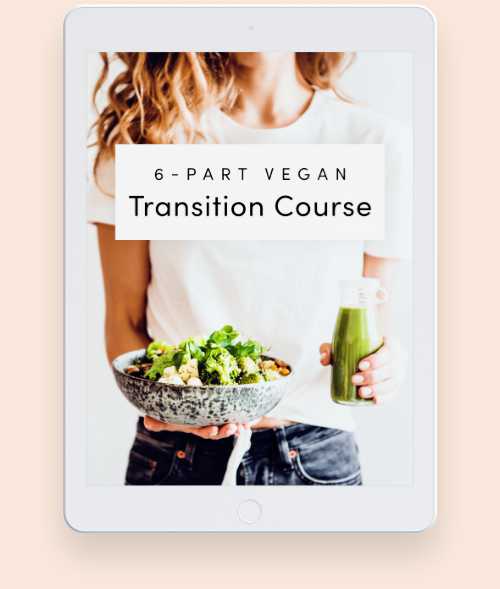
join our free vegan course!
Learn how to thrive on a plant-based diet with practical tips & a 3-day meal plan!
Your produce doesn’t have to be fresh, either! Feel free to get frozen fruits and vegetables which is great if you’re on a budget or want to avoid food waste.
Having them on hand is super convenient; they won’t go bad, are already washed and cut, and are sometimes even fresher than your other produce! Perfect for lazy recipes.
Find a complete vegan grocery list, emergency food list, vegan nutrition guide and our favorite vegan substitutions on our website!
Quick vegan food list
We thought we could start with an overview of what the main foods are that compose a vegan diet. This can help you tremendously when thinking about putting together meals or replacing single items that are not vegan.
- Green leafy vegetables
- Colorful non-starchy vegetables
- Starchy vegetables, such as potatoes or pumpkin
- Fruits from sweet to sour, fresh, frozen or canned
- Legumes like lentils, beans & soy products
- Whole grains like brown rice, oats, millet or wheat berries
- Refined grains like white rice or couscous
- Grain products like bread, pasta or cereal
- Nuts, seeds and butter made from them
- Dairy-free milks, preferably fortified
- Vegan meat substitutes made from legumes, grains or veggies
- Soy sauce, ketchup, mustard, vinegar
- Herbs and spices like smoked paprika, oregano or curry powder
Please keep in mind that this just meant to give you a rough idea. Nowadays, there are a lot of convenient and tasty fun foods at the store that you can fill your vegan pantry with!
Vegan Ingredients Checker →Eating a vegan diet can seem overwhelming, especially for beginners! To make things easier, find our step-by-step transition plan here.
So, if you’re new to plant-based eating and cooking, this list should give you a good idea of what most meals are made of.
The Essential Vegan Staple Foods
Let’s stock your vegan pantry, freezer and fridge! We tried to keep this list as generic as possible and not let our personal taste preferences influence it too much – still, you might really like or dislike a specific item.
Needless to say, you could get a lot fancier in your kitchen with baking ingredients, hot sauces, baked goods, treats, and much more.
While creating the list, we thought about it like this: if we were to live somewhere for a week or two, which foods would we get to create our daily meals? So, here we go.
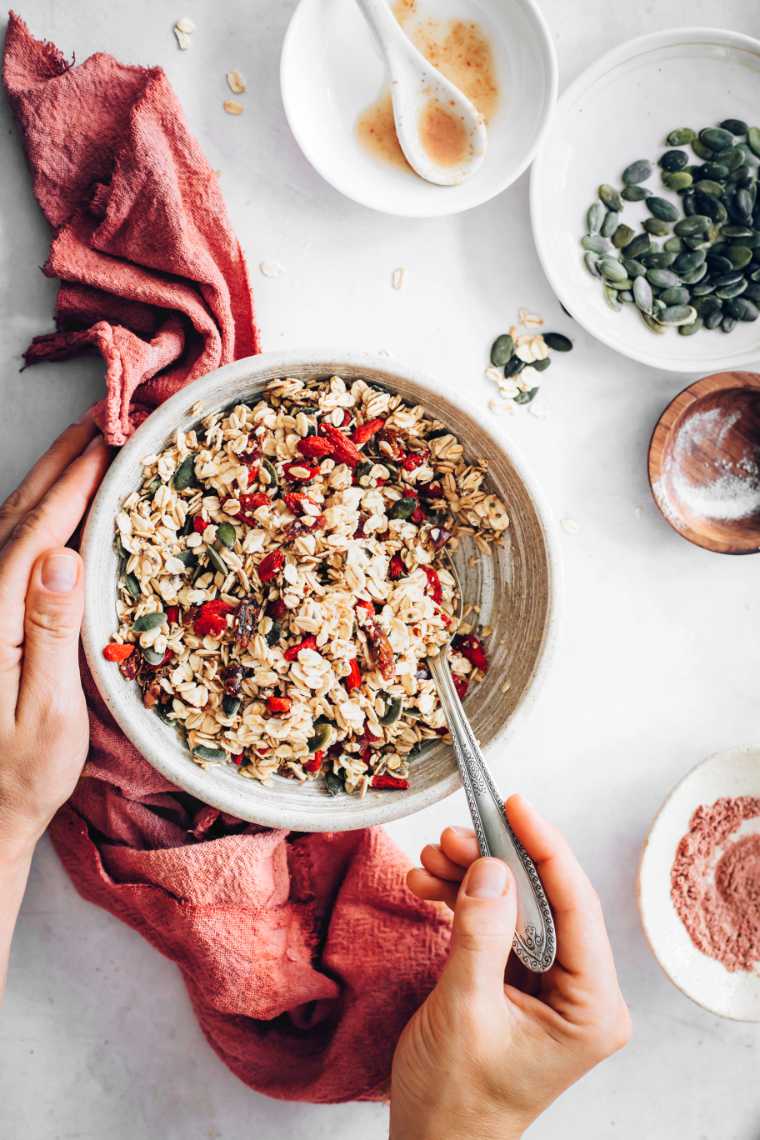
1. Rolled Oats
Though this might seem cliché, oats really are one of our most used food staples! They are incredibly versatile and make for a filling, delicious breakfast every morning.
We like to either use them for granola, muesli, cooked oatmeal or overnight oats – but they are also a lovely addition to a fruit smoothie, help to give some texture to veggie burger patties, can be made into oatmeal bars or chewy cookies.
You can easily make oat flour, too, by just blending your rolled oats for a few seconds. Oats are super healthy because they contain soluble fiber and beta-glucans, which may lower total cholesterol and control blood pressure. Oats are amongst the most filling foods around!
2. Bananas
Okay, so we know that we just wrote that buying fresh fruits and vegetables should be a no-brainer.
But trust us: bananas deserve a special mention. We eat them at least once every single day since they are our favorite dessert!
This very versatile fruit finds its way into our meals in the form of oatmeal topping, rice pudding creamer (cooking the banana with the rice), peanut butter sandwich topping, smoothie base, and banana (n)ice cream.
They can also be used in baking to substitute eggs and replace some sugar (just like in our sugar-free banana bread). Other than that, we like to freeze our very ripe bananas and snack on a few frozen pieces for dessert.
Bananas are high in fiber, potassium, calcium, and prebiotics. They can help with constipation, acid reflux, high blood pressure, and even depression!
Make sure to properly ripen them at home if you can only find green or yellow ones at the store – the perfect bananas should have at least a few brown spots.
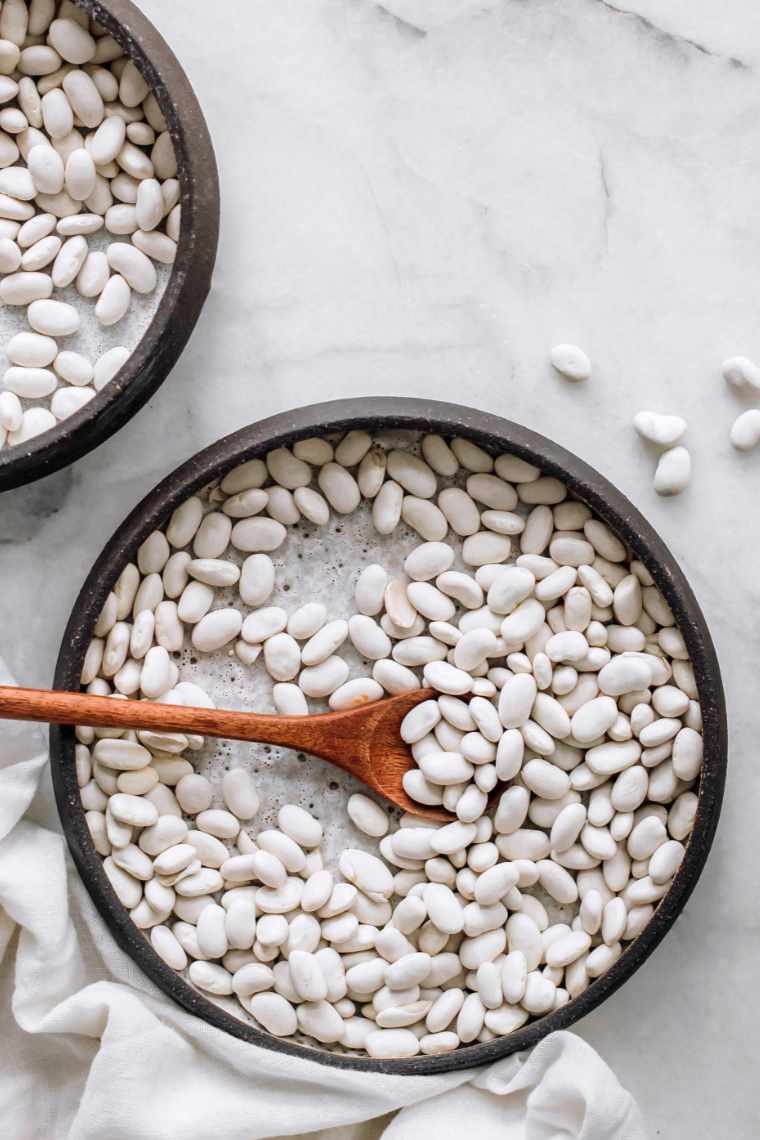
3. Beans
Beans are on the top of the list when it comes to filling and budget-friendly foods. Packed with complex carbs, fiber and protein, they are a nice addition to almost any savory dish!
Although they are a little healthier and tastier when cooked from scratch, we always have emergency canned beans (BPA-free lining!) in our kitchen.
Beans are a lovely addition to salads, stews, pasta dishes, Buddha bowls or can be used to make vegan meatballs and scrumptious plant-based burgers – even smoothies or desserts, such as truffles or brownies, can be made even better with the help of some tasty beans.
Plant-Based Protein 101 →We sometimes make our sauces with pureed beans – or, the vegan classic, hummus! Chickpeas are amazing for mock tuna, falafel, to turn into vegan protein ice cream or edible cookie dough. Insider tip: you can also make pesto from beans!
When buying your canned beans, make sure the only ingredients are beans and water, if possible. In the Blue Zones, the regions with the highest populations of centenarians, beans are seen as an important food staple for longevity and health.
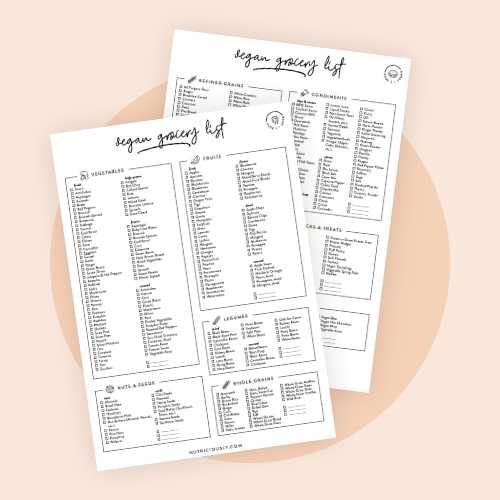
download our free printable vegan grocery list
Grab your free PDF and sign up for our newsletter by entering your email below!
4. Cashews
We wanted to add the most versatile nut to the list and couldn’t decide between cashews and almonds – as you can see, cashews won.
It’s mainly because we just recently discovered our love for self-made sliceable cashew cheeses, to be honest. But cashews are arguably the tastiest of all nuts!
They are great for toppings on your oatmeal or cereal, they do well in savory curries or stews, can be blended to make vegan milk or cream and are a great base for vegan cheese.
Plus, our favorite vegan mayo is made in just 5 minutes using cashews!
You can also just snack on them. Cashews are a little lower in fat than most other nuts and have 82% unsaturated fatty acids (which are better than saturated).
Enjoy them for their amazing texture and taste as well as their mineral content. Make sure to eat them in moderation, though, since their fat and calorie content can easily accumulate and lead to weight gain!
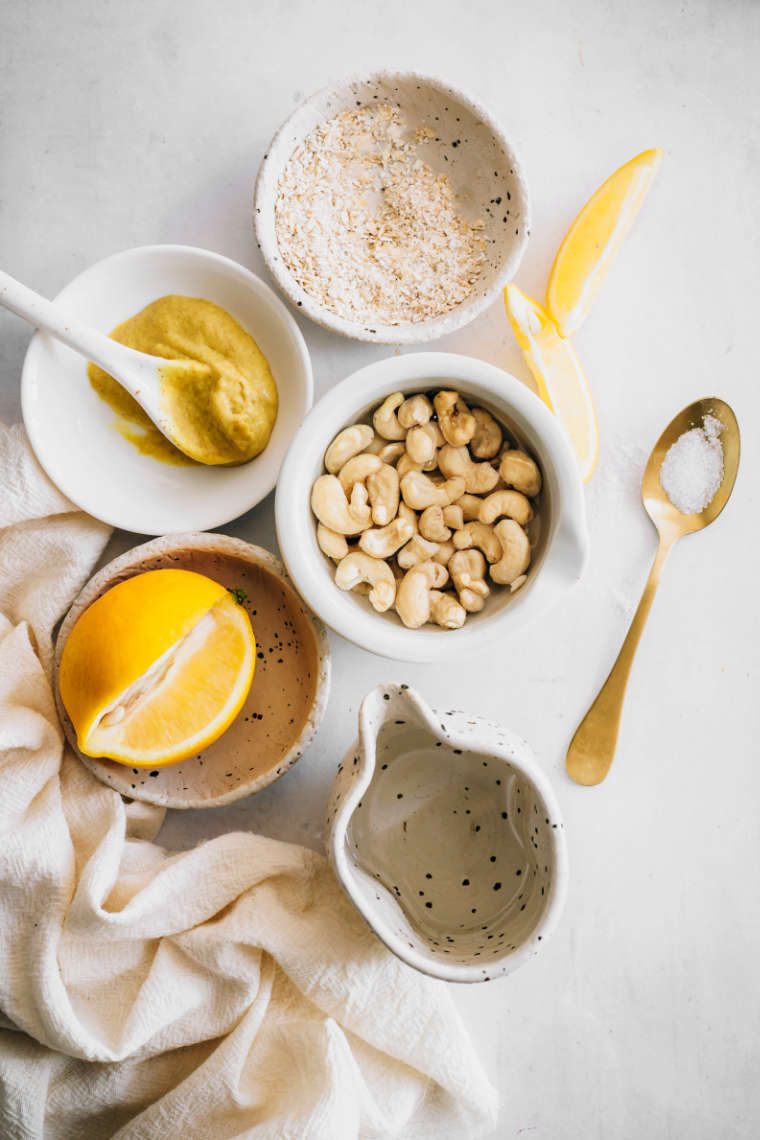
5. Lemons
Ok, so the next fresh fruit on our list. We promise this will be the last one!
But lemons can be just so magical. They make so many dishes and even beverages taste better!
You can add either a slice of lemon or some freshly pressed juice to your water and it will be sure to delight your guests. A great way to get some extra flavor and vitamins!
We personally like to use lemons in many savory meals since they enhance the flavor of other components – an especially great idea if you want to lower your sodium intake, as replacing some of the salt with lemon goes a long way. Try it!
Lemon juice also works wonderfully for sweet recipes. These healthy vegan mini lemon tarts are a perfect example!
By the way, topping your salads, grain or vegetable dishes with a splash of lemon juice isn’t just tasty but also helps with the absorption of iron. If you cannot find fresh lemons, then go with bottled!
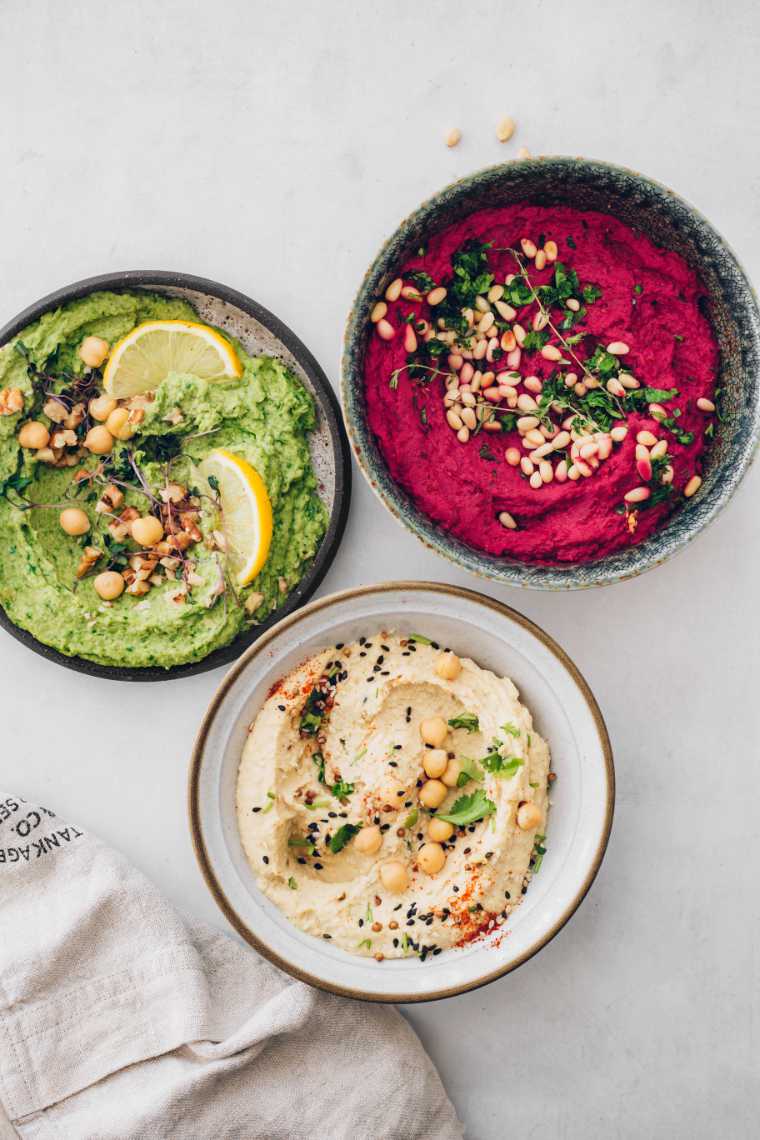
6. Hummus
Although we already mentioned beans as a great vegan pantry staple, hummus deserves an extra place on our list. Usually made from chickpeas, this all-rounder is always useful to have in your kitchen.
You can use it as a dip, sandwich spread, topping, or as a base for your dressing.
Because vegans sometimes miss out on convenience (we can’t just dip into a traditional package of cream cheese or cottage cheese!), we like to have a batch of hummus in the fridge most of the time.
Just like beans, hummus is rich in protein, fiber, and many minerals! You can actually also make it out of any beans or lentils, and adding tahini or garlic is a great way to give it additional flavor.
50+ Ideas What to Eat With Hummus →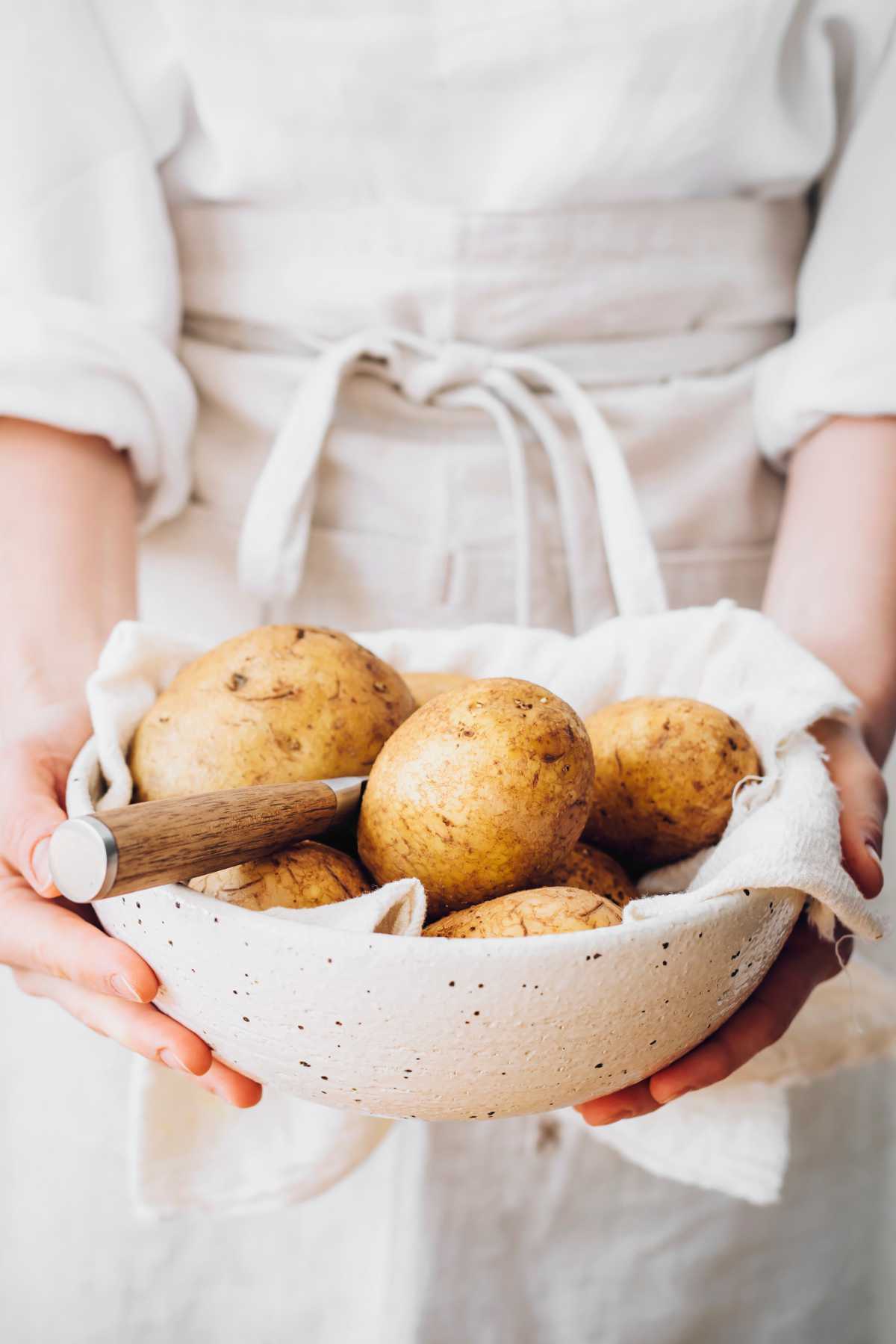
7. Potatoes
White, purple, yellow, red – we love them all! Potatoes have gotten a bad rap over the past years, and some people are afraid that they might cause weight gain or diabetes. This couldn’t be further from the truth!
Potatoes are around 70-80% water and lead the list of the most filling foods on the planet… which makes them perfect for satiety and weight loss.
They are also a very good source of vitamin B6 and a good source of potassium, copper, vitamin C, manganese, phosphorus, niacin, dietary fiber, and pantothenic acid.
We like to switch between white and sweet potatoes (which contain a huge amount of vitamin A’s precursor carotenoid).
Our favorite uses for this humble starch are hash browns, baked potatoes, potato salads, stews, curries, oven-baked fries, mashed potatoes and simple steamed potatoes.
They are also the base of many vegan cheese sauces! You could even add sweet potatoes to a smoothie or eat them baked with some fruit for breakfast since they can taste really sweet.
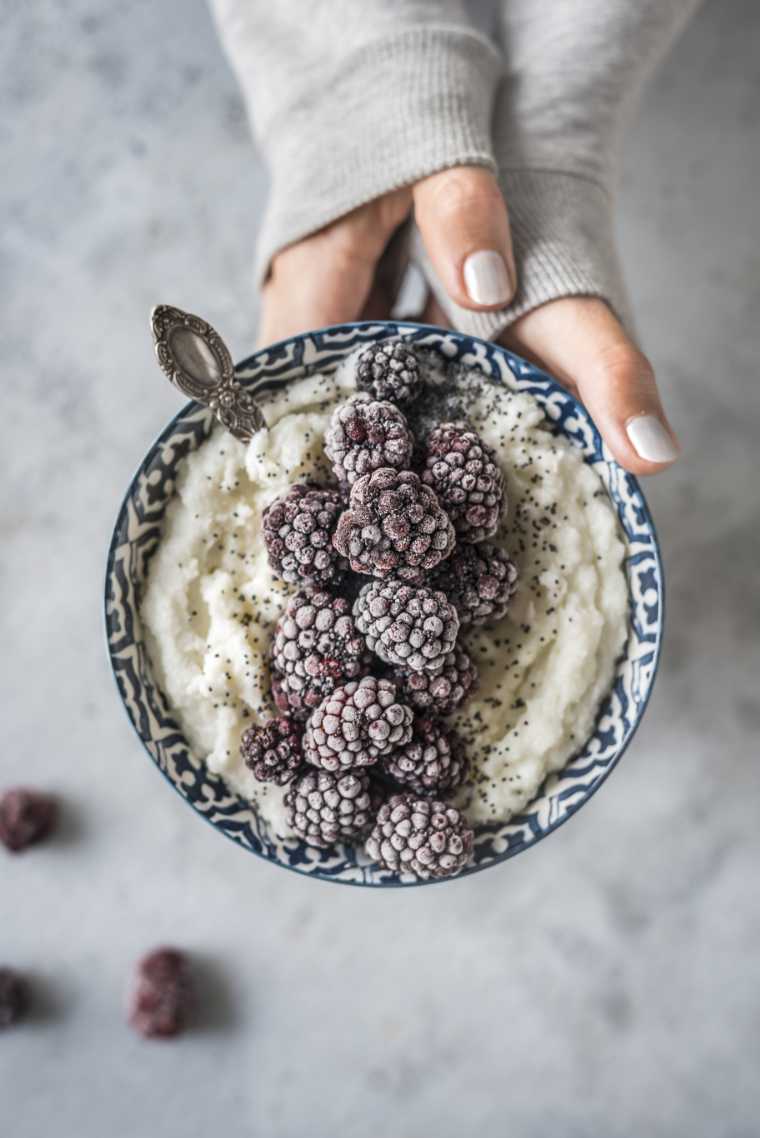
8. Frozen Berries
For the purpose of keeping this list of staple foods to a manageable length, we decided to add only one frozen food item. So, another fruit gets a shout-out!
Even though we don’t use frozen berries in a ton of ways, they somehow still find their way into our daily meals.
Frozen fruit in general is very convenient to have at home since they don’t have to be carefully stored and washed – plus, they don’t go bad in the freezer, and you can always just take out as many as you like.
You can top your oatmeal or cereal with them, put frozen berries in your smoothie, make ice cream out of them, use them in baking for muffins, put them in water for some flavoring, use them for a dressing, or eat them in coconut yogurt.
Berries are packed with antioxidants, have a low glycemic index, are a good source of fiber and can help fight disease.
During summertime, we just take some out of the freezer and snack on them! Sweet, sour, and refreshing.
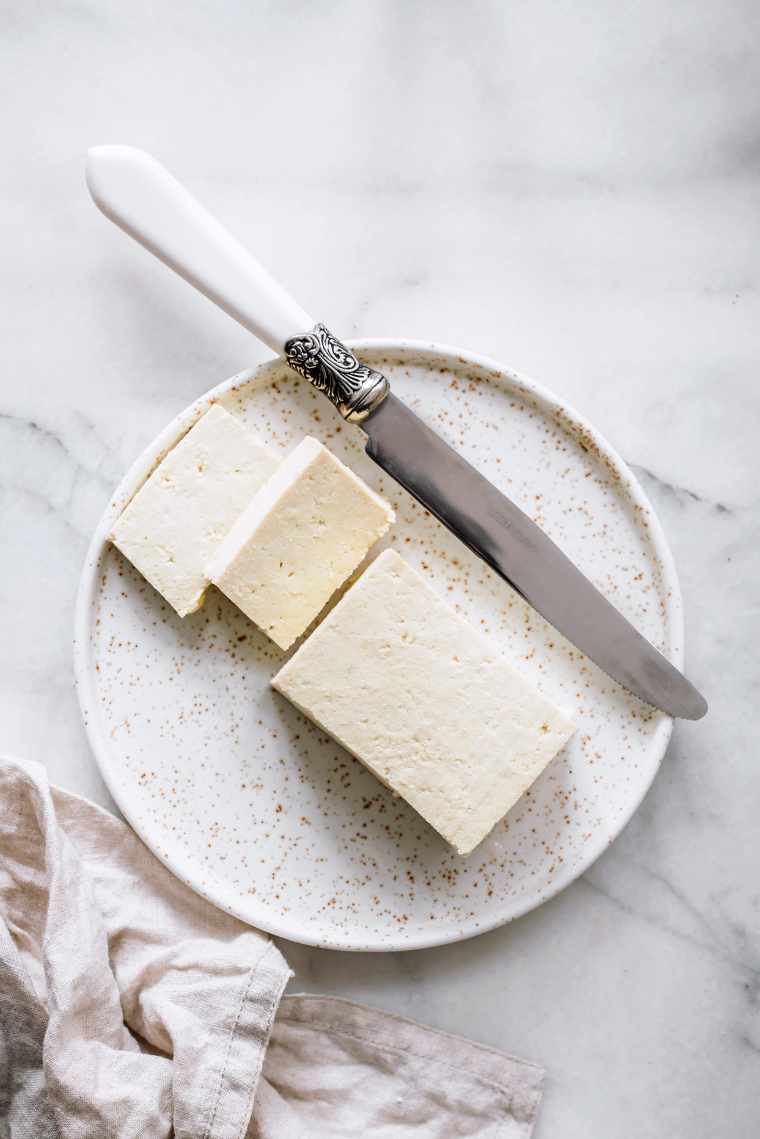
9. Tofu
Moving on to another classic vegan staple food: tofu. This delicious plant-based protein has gotten some pretty unfair bad press in recent years, but we’re still just as enthused about it as ever!
Tofu is made from soybeans and comes in more varieties than you can think of!
Starting with soft or firm tofu (unflavored), silken tofu for puddings or dips, all the way over to baked tofu, smoked or marinated.
Many faux meat products are made with it as well. We like to go for plain tofu at the store, then add the flavors ourselves at home.
You can make tofu scramble, add it to Asian stir-fries, soups, use it as a filling or a crumble, marinate and bake it, put it into spring rolls, dumplings, vegan lasagna, soba noodle salad, sandwiches or bake with it.
There are endless possibilities for this creamy and healthy food! It’s a great source of all eight essential amino acids, iron, calcium, selenium, and magnesium.
10. Tahini
Sesame butter (also called tahini) is commonly used in Middle Eastern dishes, such as hummus, falafel or vinaigrettes.
But tahini can also be put on fresh fruit for a snack or right on your bread as a spread! The sky is the limit here. We love all kinds of nut and seed butter and often have almond or cashew butter at home as well.
Some of these varieties have a sweeter, more subtle flavor – but tahini can also be used in desserts or to make creams, oatmeal toppings, spreads, sauces and much more.
Tahini is especially healthy since sesame seeds are rich in minerals (especially calcium!), protein, vitamin E, and B vitamins.
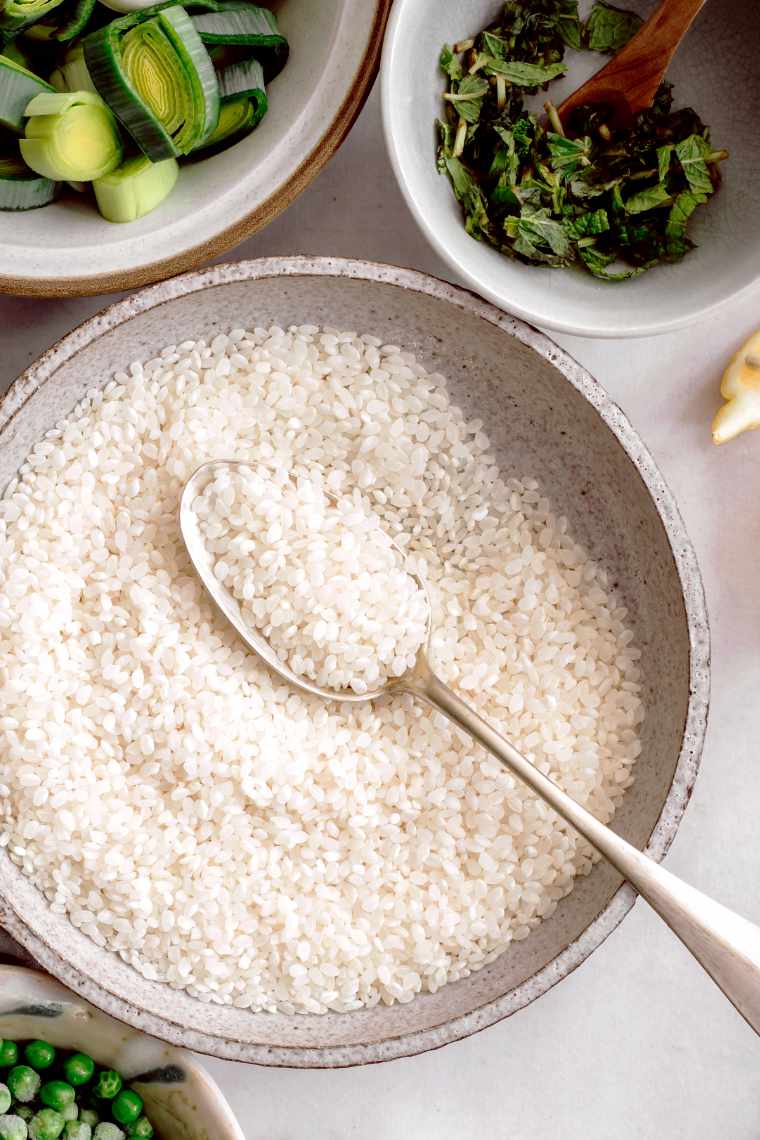
11. Rice
There are many varieties of rice and all of them are delicious! If you don’t like brown rice particularly much, just buy the kind you love.
There’s white, jasmine, basmati, long grain, short grain, wild rice, red or even black!
We eat rice every other day as rice pudding with fruit in the morning, rice salad, veggie stir-fries, Mexican beans with rice, mushroom risotto, Sushi rolls, curries, soups, bean chili and basically any thrown-together dish works well with rice.
Seriously, if we had to choose one food to live off forever – it might be this one.
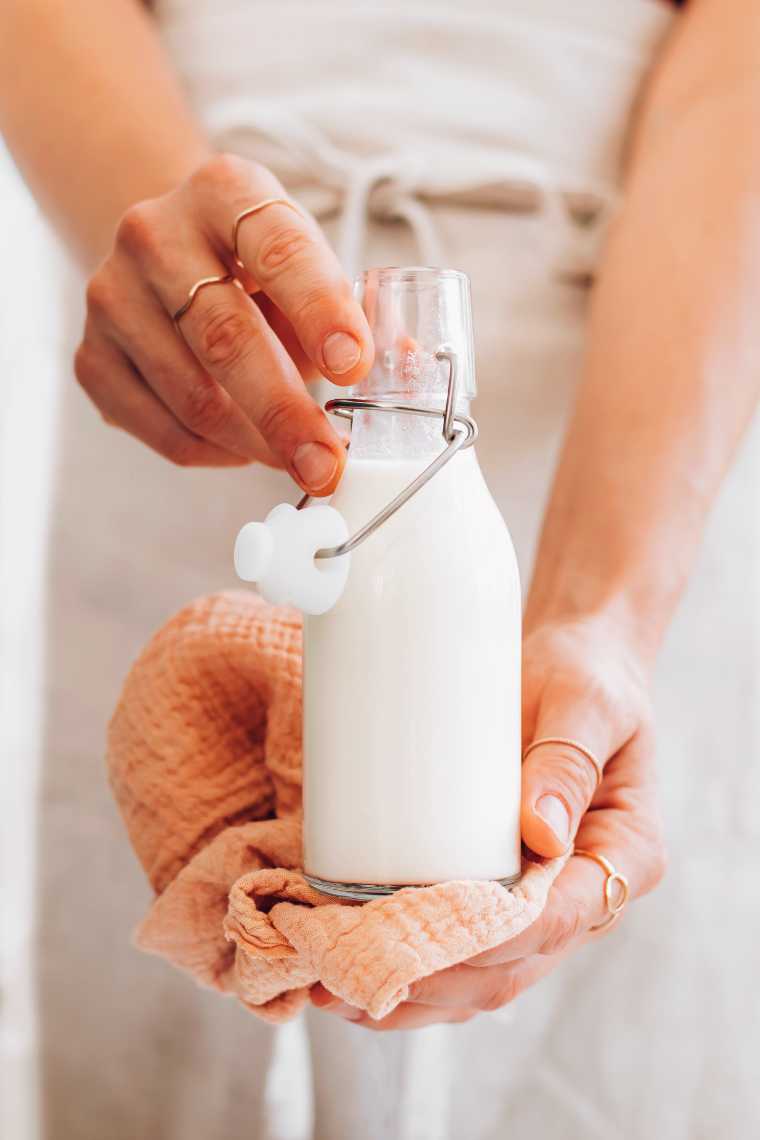
12. Plant-Based Milk
Not a day goes by without using our beloved soy milk! Almost any dish deserves at least a splash of this healthy, creamy goodness in our home.
It’s more processed than most foods in our kitchen and we don’t consume a ton of it, but a little goes a long way here. We also like to get oat milk, rice milk or almond milk from time to time, and different kinds of milk are great for different uses!
Soy milk is the richest of them all, almond milk is easily made at home and rice milk is naturally sweet and very light.
We use plant-based milk in our oatmeal or cereal, as a base for sauces (or to make them creamier), to make smoothies, in our tea or coffee, in mashed potatoes, curries, baked goods, and for many more purposes.
You can get flavored vegan milk alternatives as well – the most common ones are vanilla or chocolate. Try them all and see which one you like the best!
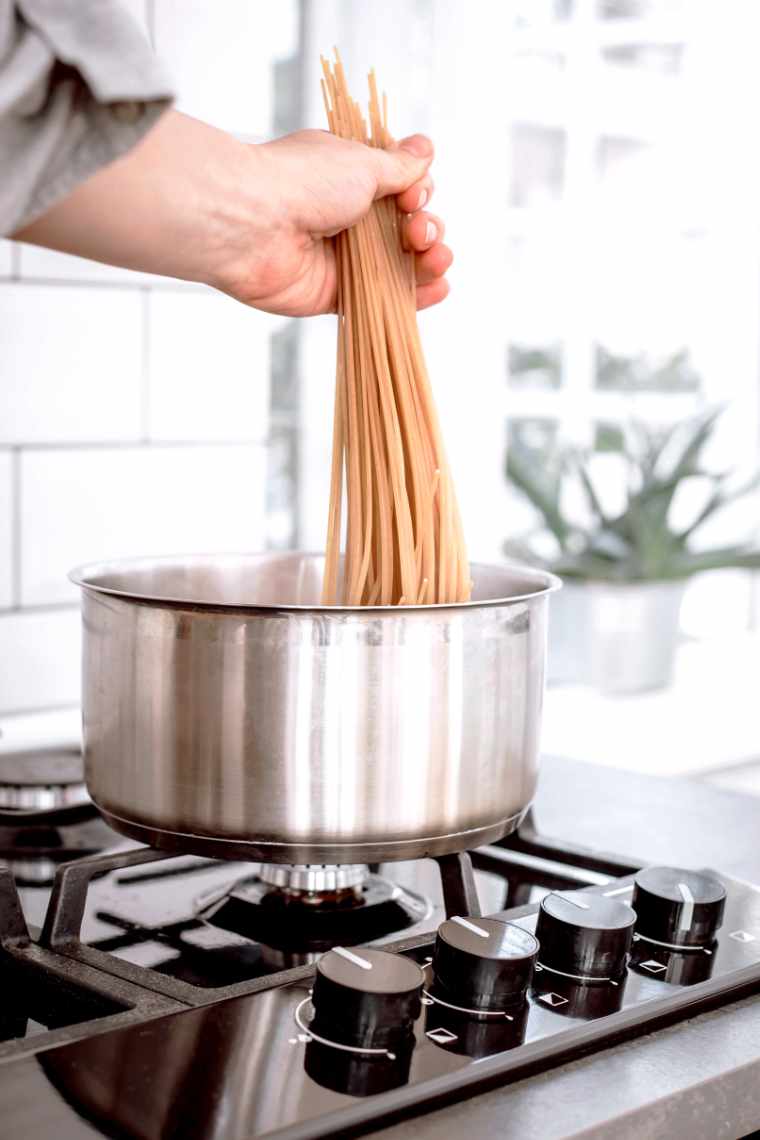
13. Pasta
Ok, so isn’t pasta an obvious staple in everyone’s diet? Because it should be. We love this delicious starchy food in all its shapes and sizes.
Plus, there are lots of gluten-free versions on the market as well, ranging from rice to corn pasta, lentil, bean or buckwheat pasta. This means that pretty much all dietary preferences can be met!
We like to have a few different types and shapes at home to whip up a spaghetti dish with vegetable Bolognese, a one-pot pasta, our favorite mac and cheese, or an Asian noodle dish.
Plus, it’s fairly easy to sneak some veggies into pasta sauces, should you have picky eaters in your family.
Check the label to make sure you don’t buy pasta made with eggs, though!
14. Apple Cider Vinegar
Granted, there are crazy claims surrounding apple cider vinegar, such as dramatic weight loss results, elimination of candida overgrowth and slowing the aging process.
While we don’t believe that there is such a thing as a miracle food that can do this alone, apple cider vinegar certainly is helpful in a couple of ways!
Be sure not to overdo it, though, since chronic use of high doses could lead to problems.
The awesome thing is that you can use ACV outside of the kitchen as well: to rinse your hair after washing it, as a facial toner or an all-purpose cleaner.
If you don’t like the taste of it so much, you can choose balsamic or rice vinegar for your recipes.
We mostly use it for salad dressings or to add to tomato sauces, making vegan buttermilk and giving soups or dips a nice fruity, sour hint.
Some people opt to drink it in the morning on an empty stomach to improve digestion, too.
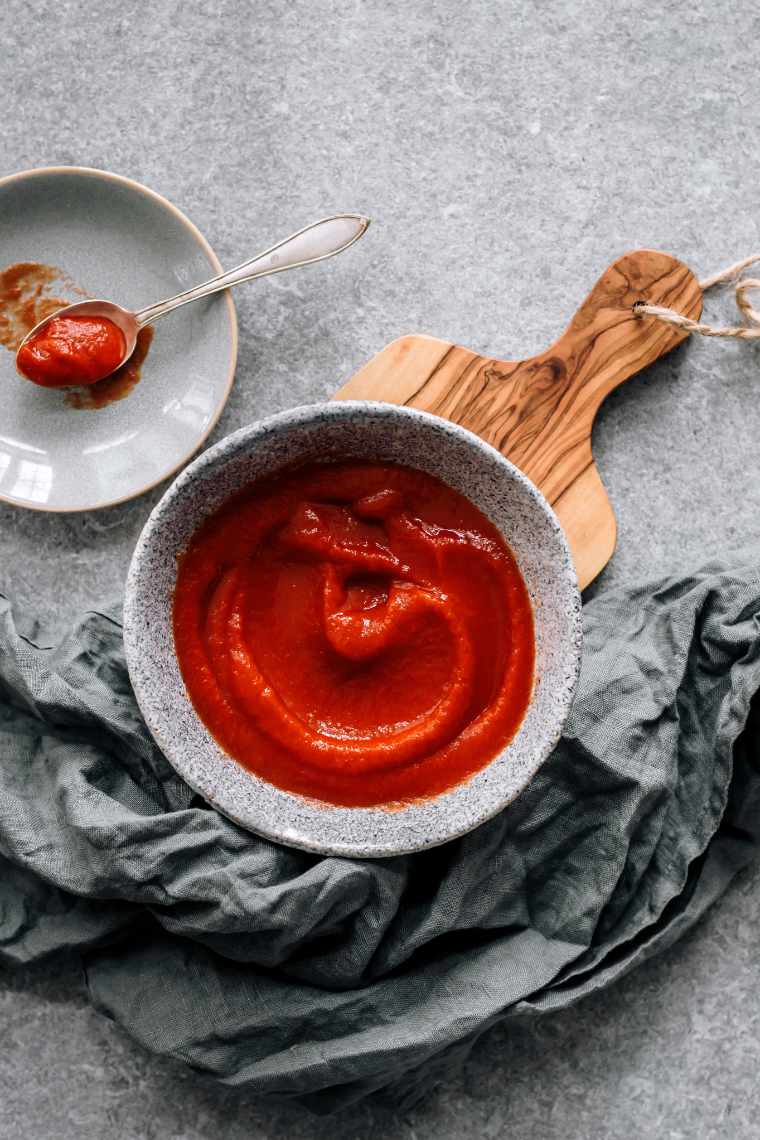
15. Tomato Products
Not only are they less pricey than fresh tomatoes but also incredibly convenient and versatile!
You can stock up your kitchen with tomato puree, tomato sauce, tomato paste, diced tomatoes, and ketchup. All of them will last for a long time and are great additions to a ton of meals.
From pizza to pasta, stews, soups, dips, spreads, chilis, marinara sauce… there are literally too many options to list here.
And whenever we freestyle in the kitchen creating some type of a veggie concoction, we often add tomato products to it. It’s definitely a must in every well-stocked kitchen and vegan pantry!
Tasty Homemade Ketchup Recipe →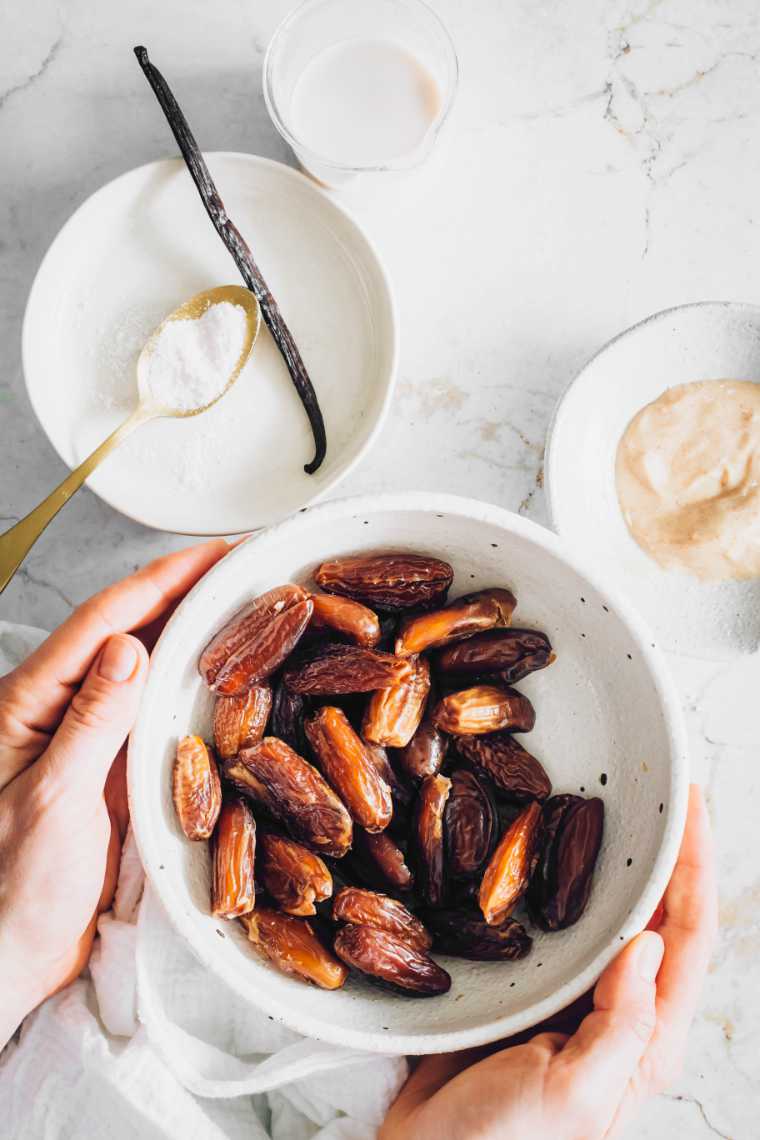
16. Dates
Possibly the tastiest and most versatile of all dried fruits are dates. They could also be called nature’s caramel, which makes them an awesome addition to your oatmeal, granola, smoothie or any dessert!
We like to use it as a sugar replacement in many recipes because they are much healthier, as they are a whole food.
Dates offer a wide range of minerals, vitamins, antioxidants, amino acids and fiber!
You can use them for snacking (stuff them with nuts!), to sweeten any of your meals, and to add an unexpected and delicious flavor to grain dishes or vegetable braises.
They make a good base for crusts, can be rolled into energy balls and are used in many no-bake desserts. If they are too expensive, you could substitute them for other dried fruit, such as raisins or figs
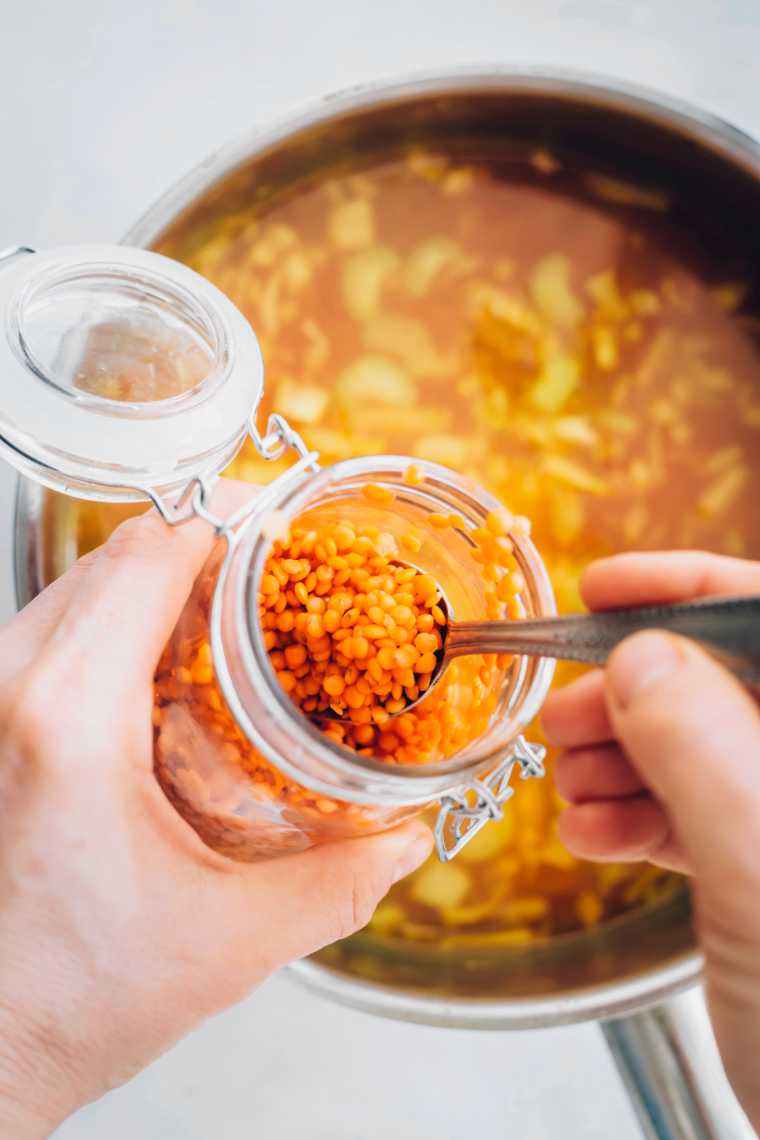
17. Lentils
Similar to beans, lentils are very filling and provide lots of fiber, complex carbs and plant protein.
They can also offer you a decent amount of iron, B vitamins, zinc, and potassium, making them an amazing food choice for athletes and people looking to lose weight.
Lentils are smaller and have a slightly different texture than beans. You can just add them to stews, make lentil soups, salads, vegan lentil loaf, sloppy joes, red lentil chili, Bolognese, and much more.
They are a great and versatile meat replacement and pretty quick to cook, which is why we always use dry lentils instead of canned. No matter if they’re red, yellow or black – you should definitely have some lentils at home!
18. Nutritional Yeast
Vegan cheeses? Well, they wouldn’t exist without this little helper. Nutritional yeast is made from a single-celled organism that is grown on molasses, then dried with heat to deactivate it.
Even though it might have an unappealing name, nutritional yeast offers a taste so similar to cheese that most vegans are totally crazy about it.
Some brands add vitamin B12 to their nutritional yeast, which is already naturally high in B vitamins. It also offers some decent amounts of folic acid, selenium, zinc and protein while being low in fat, free from gluten, sugar, and preservatives (check labels).
You can top your pasta or pizza with it, blend it up with cashews to make vegan parmesan, add it to your popcorn, creamy sauces, mashed potatoes and so much more! The sky is the limit here.
Easy Vegan Cheese Sauce →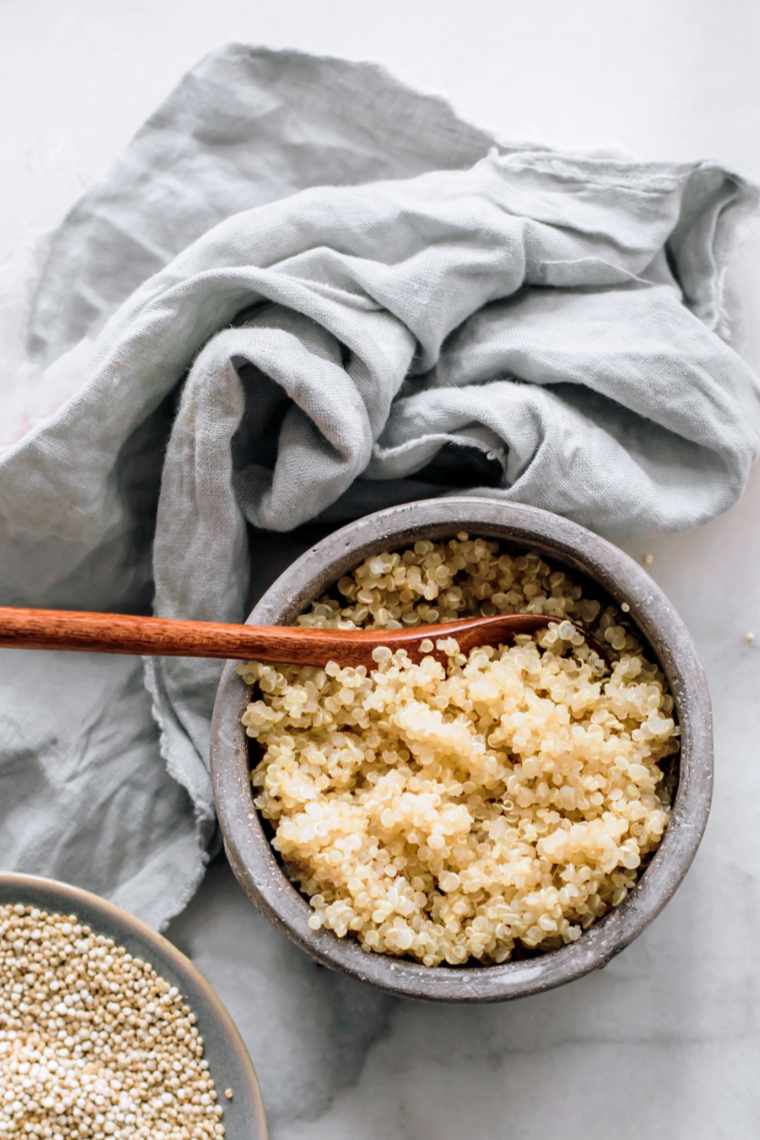
19. Quinoa
Meet our favorite pseudo-grain! Although quinoa might not be a very local or cheap food choice (depending on where you live), we wanted to shed some light on it.
Did you know that the FAO (The Food and Agricultural Organization of the United Nations) has officially declared the year 2013 to be recognized as “The International Year of the Quinoa”?
It’s because of the grain’s high nutritive value and because it plays an important role in achieving food security worldwide.
It has antioxidants, anti-inflammatory compounds, omega-3 fatty acids and it even serves as a great protein source.
We like to enjoy quinoa in the form of a salad, stuffed into roasted veggies, in Buddha bowls, as a breakfast grain, in stews or even as pancakes!
If you’re on a budget, feel free to skip this one and go for another grain instead.
40+ Vegan Quinoa Recipes →20. Veggie Broth
You can probably think of a few good uses for veggie broth already, but how about this one: use it to sauté your veggies with instead of oil!
It offers a nice flavor to any savory meal – if you want to go for healthier store-bought versions, look out for the amount of sugar, oil and sodium.
You can even make it yourself using kitchen scraps, which you can collect over a few days. We like to add some veggie stock to many types of soups, stews, sauces and basically just about anything that needs some basic savory flavor.
It even contains some of the nutrition from the original vegetables and herbs, so it adds to your vitamin and mineral intake.
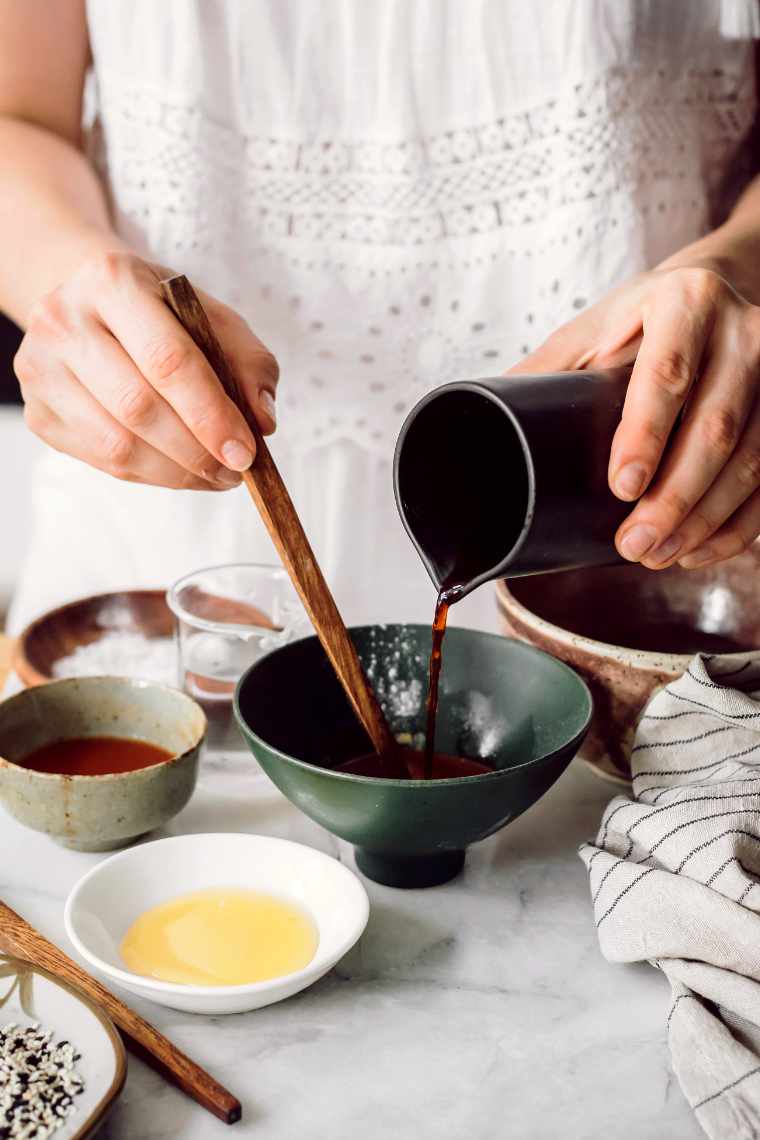
21. Soy Sauce
Do you love Asian flavors as much as we do? Soy sauce (or Tamari for a wheat-free version) adds more than just saltiness to your dishes.
You can look out for low-sodium sauces if you want to further reduce your salt intake. Soy sauce is easy to get, but we recommend you check the ingredient list at the store and get a sugar-free one if possible.
We use our soy sauce for anything from salad dressings, chilis, curries, stews, to marinades, peanut sauce and more.
It also works well for sautéing your veggies!
Soy sauce is a must for most Asian dishes! It really brings out the umami flavor in foods, adding a bit of savory depth to your dishes.
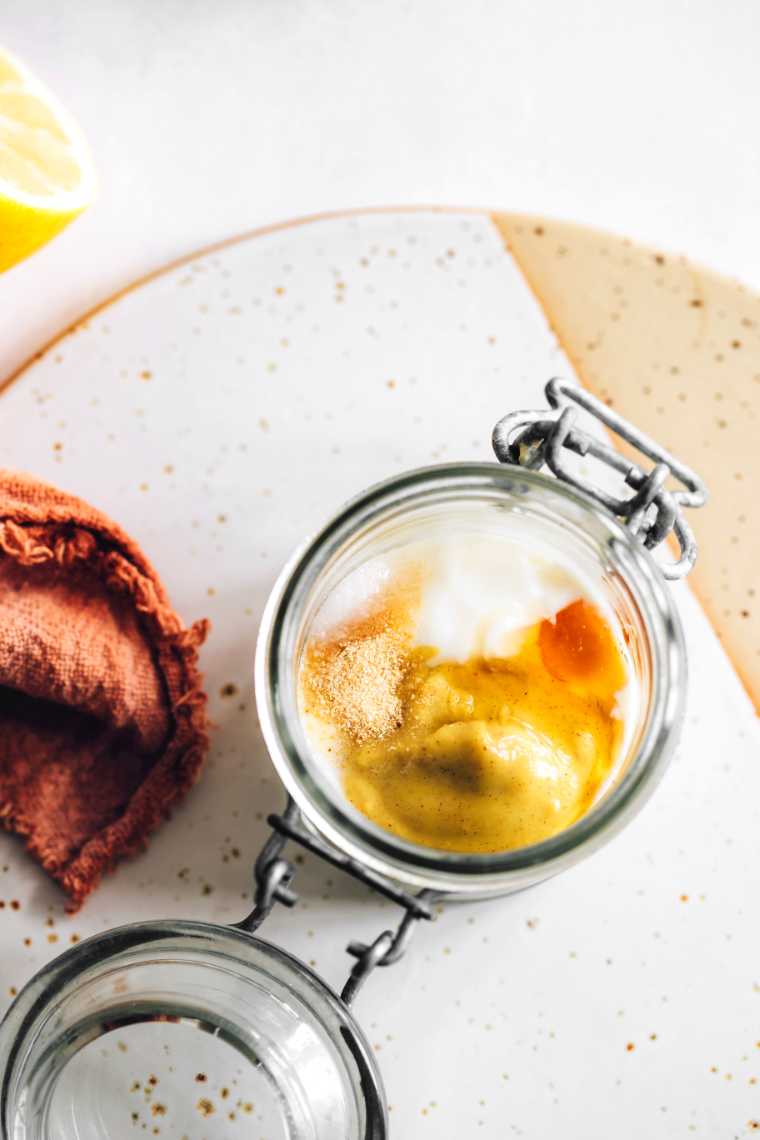
22. Mustard
Mustard adds lots of flavor and is perfect for using in sandwiches, soups, dips, dressings and as an addition to a few other sauces.
It is made of mustard seeds, which are a rich source of minerals such as calcium, magnesium, potassium, folate, and vitamin A. It can help with respiratory diseases, skin issues, cholesterol levels, and digestion.
You’ll be surprised how much flavor it can add to very simple dishes! Mustard can make a plain baked potato or steamed cauliflower very delicious in just a few seconds.
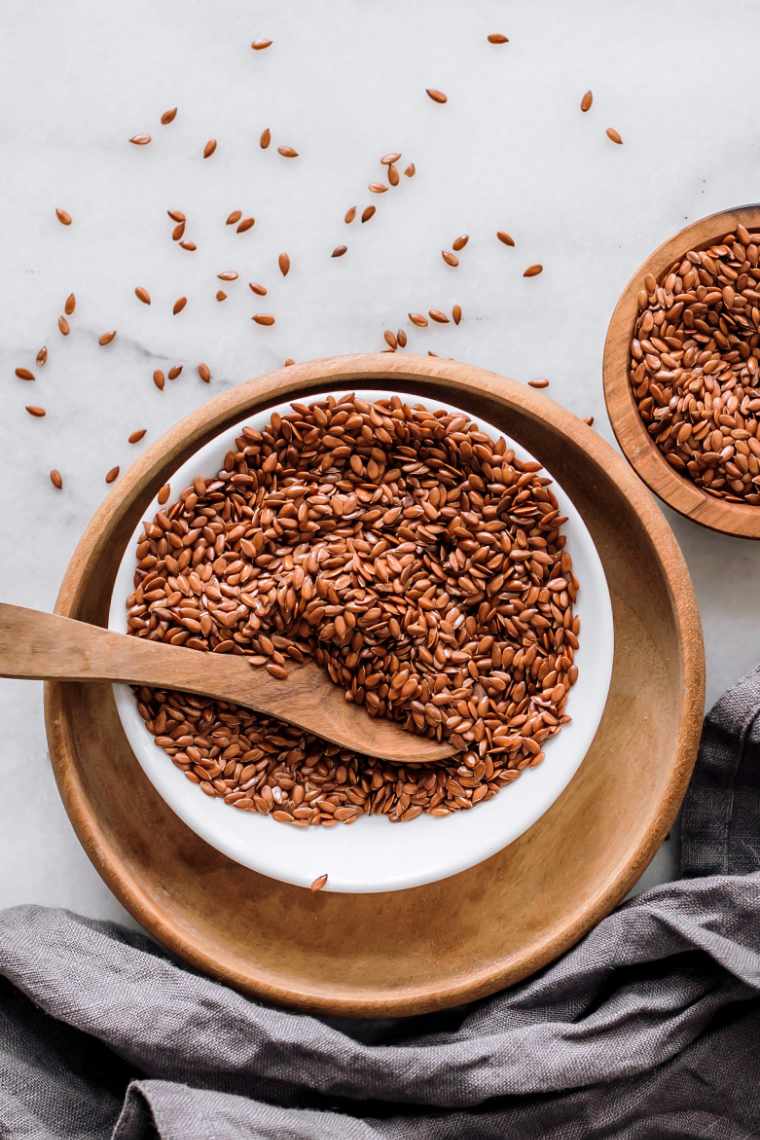
23. Flaxseeds
Have you ever heard of people fearing that vegans don’t get enough Omega-3s? Well, our answer to that is… flaxseeds.
These little powerhouses contain the largest amount of alpha-linolenic acid, a primary Omega-3 fatty acid, out of all foods! This compound is important for healthy brain function, heart health, and fighting inflammatory diseases.
Flaxseeds are an easy egg replacement: by mixing them with water, they form a gel that you can use in your baking. Totally free of cholesterol while adding fiber to your dish! Win-win.
An easy way to consume flax is to put it on your oatmeal, in smoothies, on top of salads, or use it in baking. Make sure the seeds are ground so you can actually absorb the Omega-3s!
A fancier option of flaxseeds are chia seeds, which have a very similar nutritional profile and use but are usually more expensive.
24. Maple Syrup
If there’s such a thing as healthier sweeteners, maple syrup is one of them. The only way up here would be whole fruit, date sugar or paste, and perhaps molasses.
All of these are tasty, but they’re not as versatile as maple syrup. We use it for sauces, pancakes, in baking as a sugar substitute (along with some fresh dates), for sweet hot chocolate, salad dressings or in our oatmeal.
You can also use it to glaze your veggies. Okay, now it seems like we use it a lot! The truth is, maple syrup comes in handy every other day or so.
Don’t kid yourself by thinking it’s a health food; it simply adds some deliciousness to otherwise healthy foods.
But the amounts are small – and you’re much better off getting these nutrients by eating an overall healthy diet. We definitely prefer it over agave or white sugar!
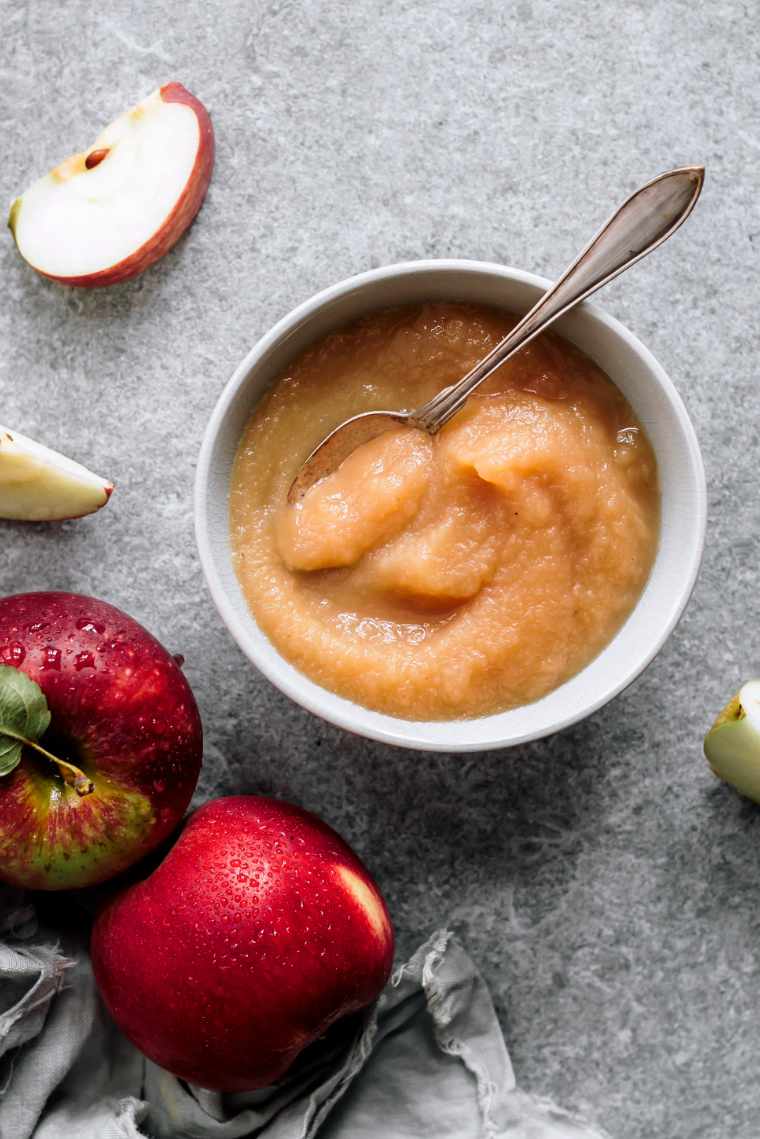
25. Applesauce
Another versatile little helper, believe it or not, is applesauce. If you buy an unsweetened version (or make it yourself at home), you can use it as a substitute for butter, eggs and even oil in vegan baking.
We often make muffins, cookies, cakes, cornbread, latkes and brownies using applesauce! It’s also great with pancakes, as an oatmeal topping, or a simple snack.
Applesauce is just a fantastic vegan staple food since it has a relatively long shelf life, offers a lot of fiber and vitamin C, and is very low in fat and calories.
More vegan guides
- How to make a good vegan breakfast
- How to make spiralized vegetables
- Vegan meal planning tips
- Is olive oil vegan?
- What I Eat in a Day
Which of these vegan staples are your favorites and how do you use them? Let us know in the comments below and share this article on Pinterest!

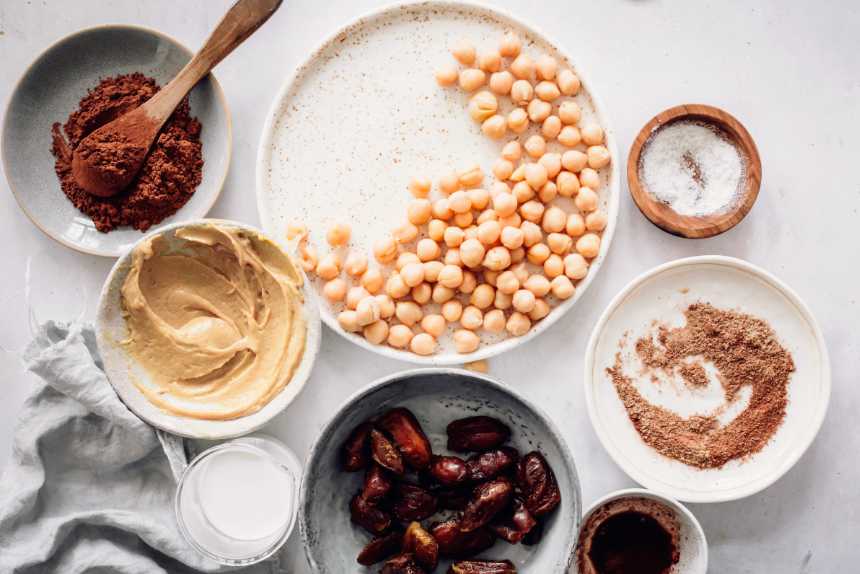
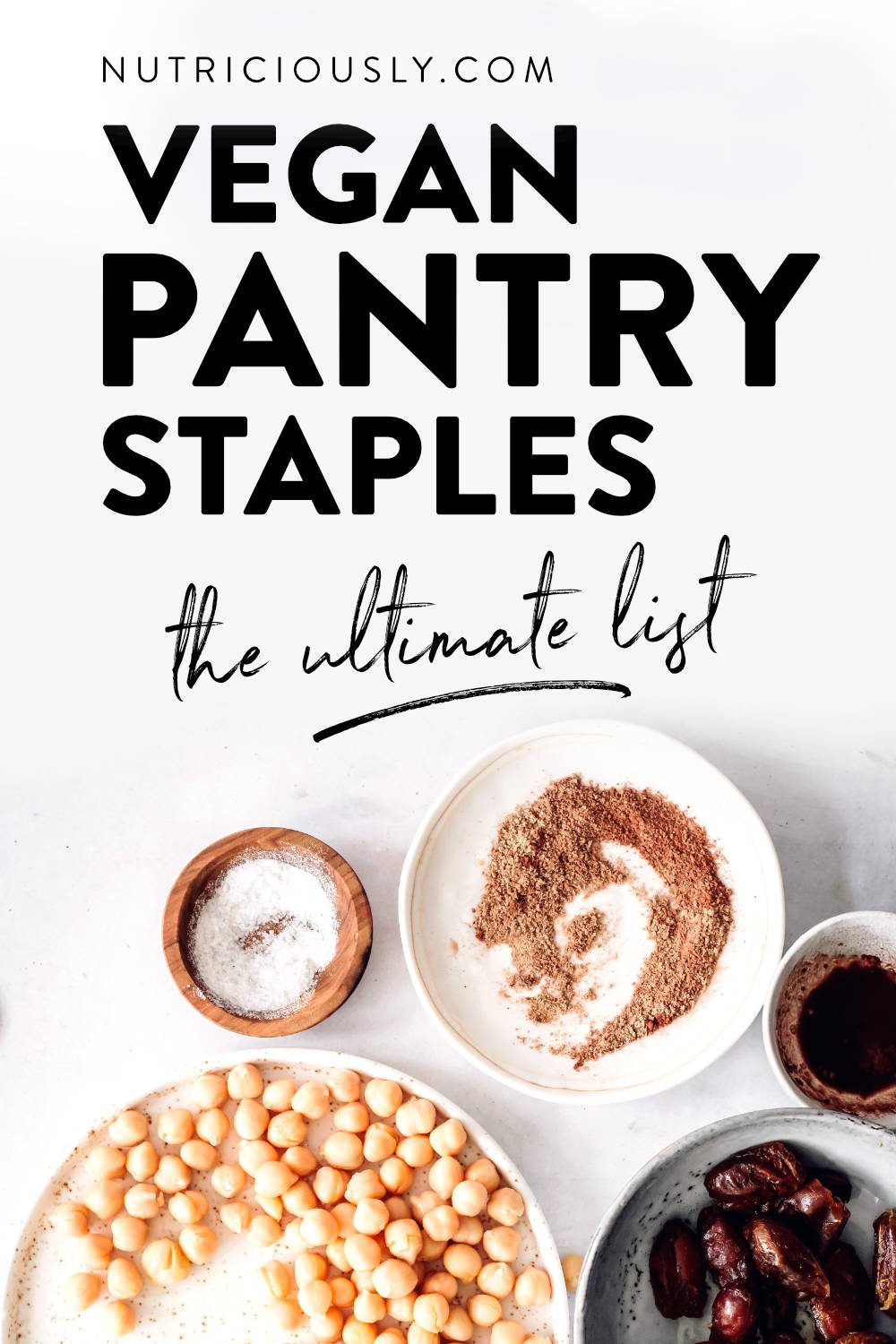

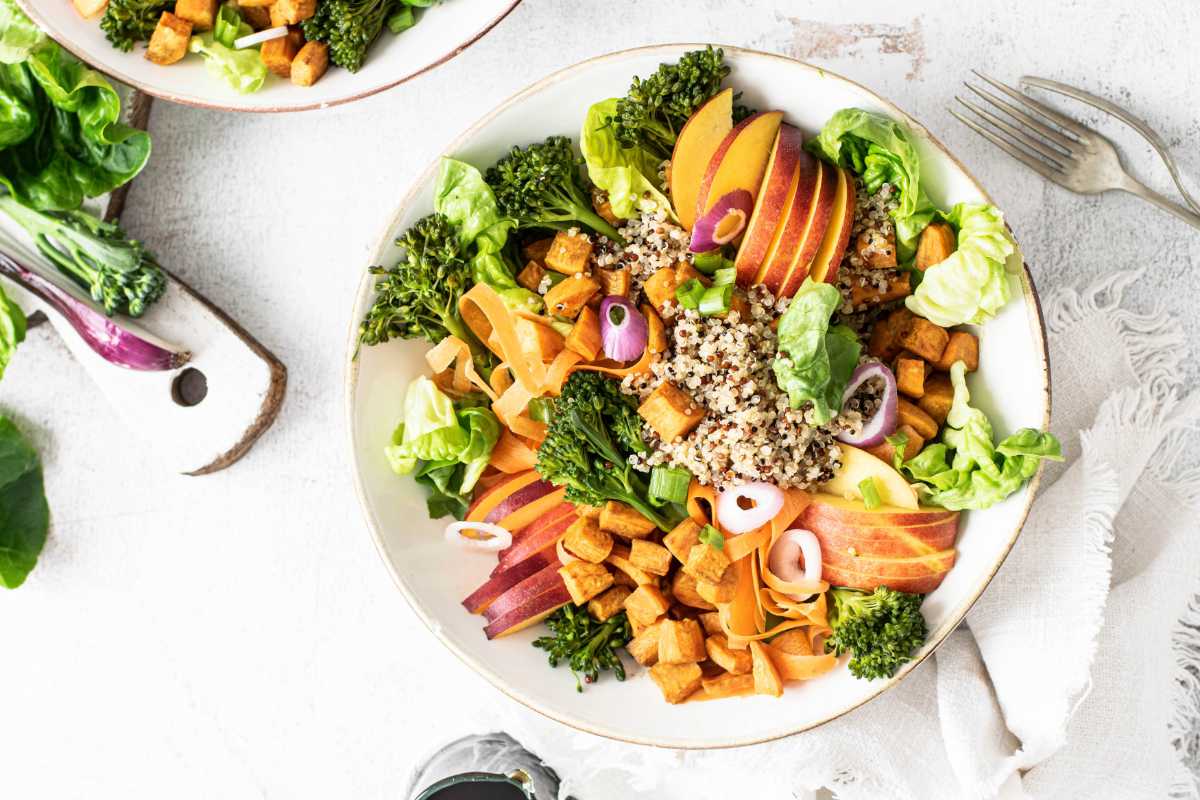


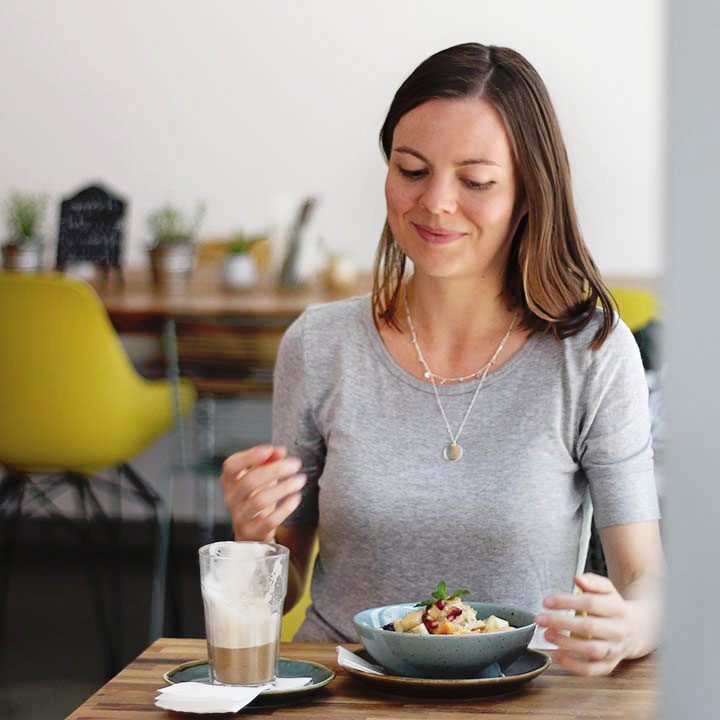
 Alena Schowalter is a Certified Vegan Nutritionist who has been a vegetarian since childhood and vegan since 2012. Together with her husband, she founded nutriciously in 2015 and has been guiding thousands of people through different transition stages towards a healthy plant-based diet. She’s received training in the fields of nutrition, music therapy and social work. Alena enjoys discussions around vegan ethics, walks through nature and creating new recipes.
Alena Schowalter is a Certified Vegan Nutritionist who has been a vegetarian since childhood and vegan since 2012. Together with her husband, she founded nutriciously in 2015 and has been guiding thousands of people through different transition stages towards a healthy plant-based diet. She’s received training in the fields of nutrition, music therapy and social work. Alena enjoys discussions around vegan ethics, walks through nature and creating new recipes.
There’s some great food groups here as a vegan.
I in fact would love to have seen Seaweed added on to the list. This would have made the list extra nutritional ;)
Hi there Samuel,
thanks for the comment! We don’t eat much seaweed and it’s not really a staple food but rather a condiment in the kitchen – which is why it didn’t make the list. It’s also often contaminated with fish or other small animals which is why I’m not too keen on buying it.
Best wishes,
Alena
Great article and list! Thanks!
Happy you like it :)
Hi there, and thank you for all the info.
I have never done Vegan nor Vegetarian meal plans.
My Lab work was not good this last doctors visit, as I was trying to eat Vegan (without any information on it).
My hope is to eat without Soy, as it bothers me, and no Nightshade veggies, as I have a body full of arthritis.
I love grains etc., and grew up with very little meat protein other than eggs.
Any hope for me to try Vegan/Vegetarian eating? Thankyou!
Hi Diane,
thanks for getting in touch. If you’re dealing with specific health issues, I’d recommend working with an RD or MD on this. Sure, one could eat a vegan diet free from soy and nightshades!
As for constructing a healthy vegan diet, feel free to check these sources:
http://nutriciously.com/vegan-food-pyramid/
http://nutriciously.com/transitioning-to-a-vegan-diet/
Hope this helps for now!
All my best,
Alena
What about the acidity of tomatoes eating away the lining in the cans? Was always told this as a kid. It was canned food to avoid lol
Yes, heard of this as well! We mostly buy “passata”, which is tomato sauce or puree that comes in cartons and not actual cans. As for the grand scheme of things, I guess there are a lot more tweaks you could do that would have a bigger impact on your health than making your own tomato sauce every time!
Do you happen to have any sources on this, Google doesn’t really find anything… I would also be interested to know more :)
Hi Alena. Thanks for a great article. I have been following a plant-based diet for roughly two months now, after having been vegetarian for two years. Slowly, I am bringing my husband and our four children on board! I am working on a doctoral degree and would like to focus on the benefits of a plant-based diet and how to successfully convert those in poor, urban areas to this style of eating. Please share any sources of valid research you are aware of. Thanks so much!
I have most of these except for high-potassium legumes and potatoes. I make my own vegetable broth from low-potassium, low-phosphorus veggie scraps but without any sodium added since I’m on a low-sodium, low-potassium, low-phosphorus renal diet. I’m also diabetic so have to carefully balance the often-opposing nutritional requirements of each. So far I’m finding your site quite helpful, especially in terms of vegan treats and snacks I did not realize were “accidentally” vegan. Thanks!
Thanks for all the wonderful information you make available. I noticed you don’t mention coconut products (except for the coconut yoghurt). I understood that coconut milk and cocnut oil provide valuable healthy fats (especially if one needs to put on weight). Are you not keen on coconuts?
This is a very informative article! I’m glad I have everything stacked up that you mentioned here :) I’ve noticed a lot of weight loss tips on your blog, which is great. But having a high metabolism myself I would be totally interested to hear your tips for weight gain. I’m really struggling to gain a few kilos on a vegan diet. I’m sure there are lots of people out there who would be interested in a blog article about this topic as well.
Thanks, Alena, for all this great information. At age 70, I only began a Vegan plant-based diet about 5-6 weeks ago. I am glad that one gentleman asked about seaweed. Your answer about seaweed being contaminated with fish or other small animals was illuminating. All my life, I have professed my deep love of all animals and not just the furry kind. I happened to come across the website for the group, Mercy for Animals. What I read there, was heart-breaking for me. That was the key turning point for me. I will never eat any type of living animal again, be they… ones who walk on two or four legs, fly through the air, hop, slither on the ground, swim with fins or any other kind of land or water movement, etc. After some negative comments about eggs from non-vegan type others, I wanted to be absolutely sure about not eating eggs. I didn’t exactly find what I hoped I would. Eggs to me are incubators for living baby animals, not food. But, I couldn’t find an actual answer to my question, “How does the live baby bird vanish from the egg leaving the yolk and egg white behind for use as a food source?” Could you please direct me to a source or two explaining how this comes about? I would really appreciate knowing what happens. Thank you so much for sharing your knowledge of the Vegan diet. Hugs.
Hi, Barbara? It s so great to see vegans of every age? I’d like to give you an answer about eggs, if you don’t mind. You know, the eggs which are sold in the supermarkets, they are unfertilized, so just “empty of a germ.
Hi Elena
Thanks for your informative articles. It can become very time consuming to discern between truth and myths. I am an ex registered nurse that needed to give up my job due to psoriatic arthritis.
It wasn’t until ill health presented itself that I even considered poor diet to be the cause of my disease. Looking back it makes perfect sense that we are what we eat and drink.
We need more informed people such as yourself presenting relevant topics to help those who for whatever reason are unaware of the effect of diet/nutrition on our bodies
Thanks for all you do
I love cashews and almonds, but I have removed them from my diet. Here’s why. Almonds are a very water intensive crop. US walnuts are grown in ever increasing numbers in California, where scarce water supplies are used to grow them. We are in an epic drought; the water in the Colorado Rive basin is over allocated. City water supplies are threatened. I cannot justify eating almonds that are grown in the desert using precious water. As for cashews, they are often harvested by workers who have no protection. Cashew plants are toxic; the workers often suffer burns and other injuries. I can’t support this exploitation. Maybe there are fair trade cashews and almonds grown where water isn’t an issue (and transportation isn’t extreme); I’d love it if there are!